Wetsuit Buying Guide: Thickness, Temperature & Materials
If you're into surfing, paddleboarding, or just swimming in the waves, you know how important a good wetsuit can be. It can totally transform your experience out there and keep you in the ocean doing what you love, for longer.
But, if you're feeling a bit lost in the sea of options and prices when it comes to buying a wetsuit, don't worry. This article is going to help you out by breaking down everything you need to know about this essential piece of water gear.
For a quick guide to wetsuit thickness and temperature, dive right in.

Daniel Lofaso
SwellSpy Founder
Wetsuit Thickness & Temperature Guide
Water Temperature Range
| Wetsuit Thickness
| Recommended Wetsuit |
|---|---|---|
75°F and above / 24°C and above
| none | Skin it (no wetsuit) |
70-75°F / 21-24°C
| 1mm - 2mm | Jacket |
65-70°F / 18-21°C | 2mm - 3/2mm | Springsuit or full suit |
60-65°F / 16-18°C | 3/2mm | Full suit |
50-60°F / 10-16°C | 4/3mm - 5/4mm | Full suit with boots (optional) |
50°F and below / 10°C and below | 6/5/4mm | Full suit with boots, gloves, + hood |
Do wetsuits keep you warm?
Have you ever wondered if a wetsuit keeps you warm in chilly waters? Well, wetsuits are constructed using a stretchy neoprene material that fits tightly like a second skin. When worn, the wetsuit traps a thin layer of water between your skin and the suit, which your body then warms up. This water layer acts as an insulator, keeping you snug and warm in the cold water.
To ensure that the wetsuit traps water effectively, it's crucial that the wetsuit fits snugly without any gaps or pockets where water can collect. Additionally, the wrist and ankle seams need to be snug to prevent cold water from flushing through and displacing the warm water that your body has heated.
How to choose a wetsuit
Now that you know how a wetsuit works, the next step is to choose the right one for your needs. There are two key factors to consider when choosing a wetsuit: the water temperature and the activity you'll be doing.
Wetsuits are available in various thicknesses, with thicker suits being best for colder waters. You may come across numbers in the wetsuit description, such as '5mm' or '3/2mm'.
These numbers or ratios refer to the thickness of the neoprene, measured in millimeters. A 5mm wetsuit, for instance, will have 5mm thick neoprene throughout. In a '3/2mm' wetsuit, the first number is the thickness of the body or core of the wetsuit (in this case, 3mm), while the second number is the thickness of the arms and legs (2mm in this example) for added mobility.
The activity you'll be doing while wearing the wetsuit is another essential consideration.
Wetsuits for surfing, swimming, and diving are designed for different purposes, with each having distinct features. Surfing wetsuits, for instance, have reinforced knees for durability, while swimming wetsuits are often more lightweight and flexible, although they may not be as durable.
Wetsuit types: what wetsuit do I need?
If you're looking to buy a wetsuit, there are a few different types to consider. Let's take a closer look at the most common ones, from warmest to coldest water conditions.
Keep in mind that there are different names for the same kind of wetsuit and these names can often vary from region to region. For example, I usually call a wetsuit jacket a “topper” but when shopping you’d likely find them under the “wetsuit jacket” category.
Something else to consider is that certain people have different tolerances for cold water. I have a friend who wears a full suit through Spring when everyone else is in a topper or skinning it. The other thing to consider is air temperature and wind, as warm water may feel good on the legs but exposure to colder air may merit some neoprene.
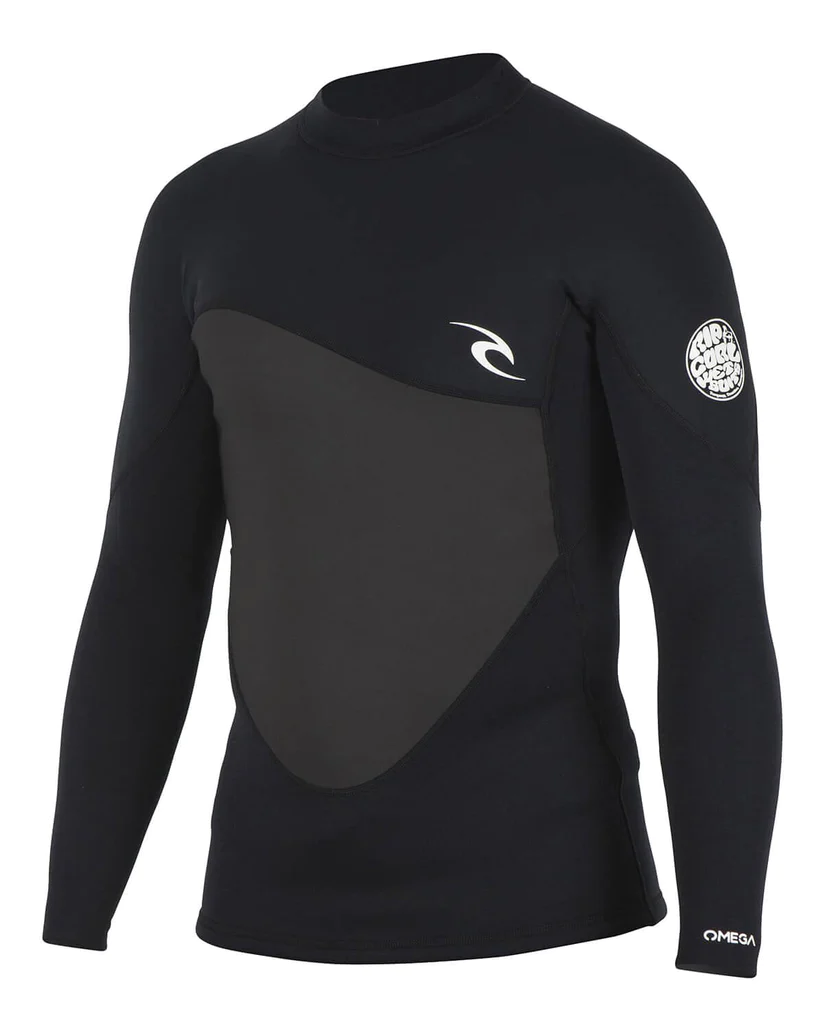
Wetsuit Jackets, Tops, or Vests
Water temperatures: 70-75°F / 21-24°C
Wetsuit vests or tops made of neoprene with a thickness of 0.5-2mm are ideal for warmer water activities and can be paired with board shorts or bikini bottoms.
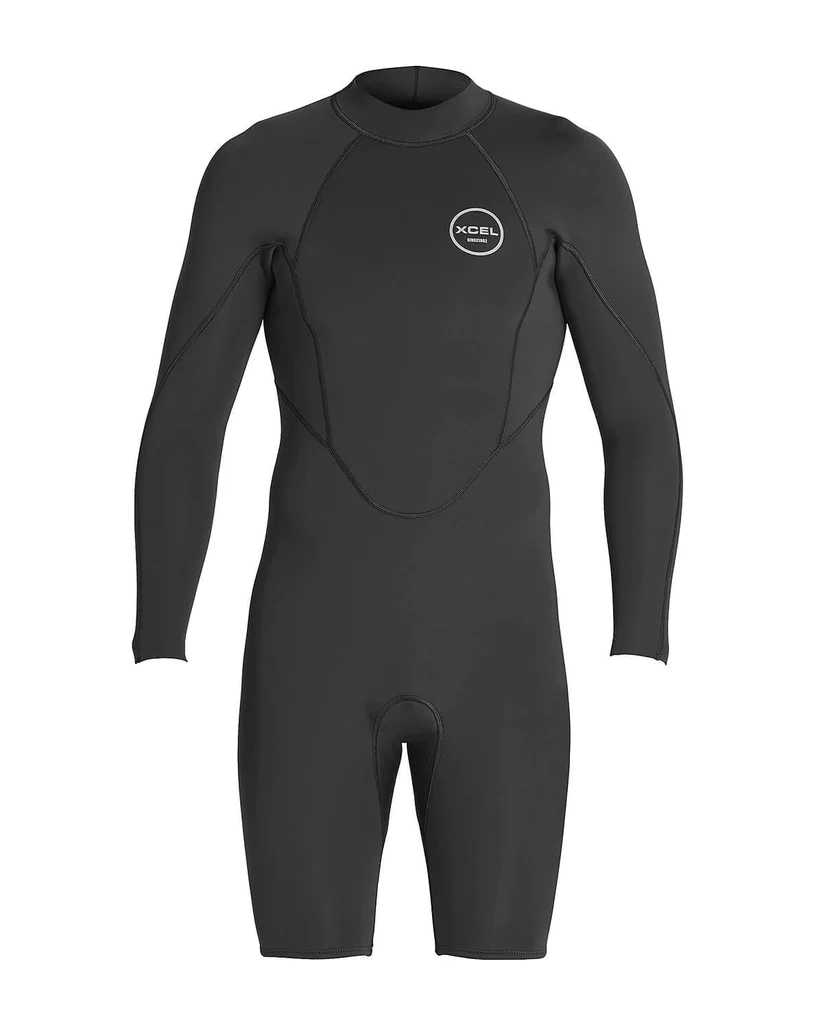
Shorty or Spring Wetsuits
Water temperatures: 65-70°F / 18-21°C
Shorty wetsuits, also known as spring suits, are cropped above the knee and come in a variety of styles, including sleeveless or with short or full-length arms. This style of wetsuit is better suited for water temperatures with a slight chill or for warmer water with a cool breeze.
Personally, living in Central Florida where the water rarely gets below 65°F/18°C, my go-to wetsuit is a long sleeve spring suit to account for cooler air temperatures. These are also a great option for those engaging in kayaking or paddleboarding, where the aim is to spend as little time as possible in the water.
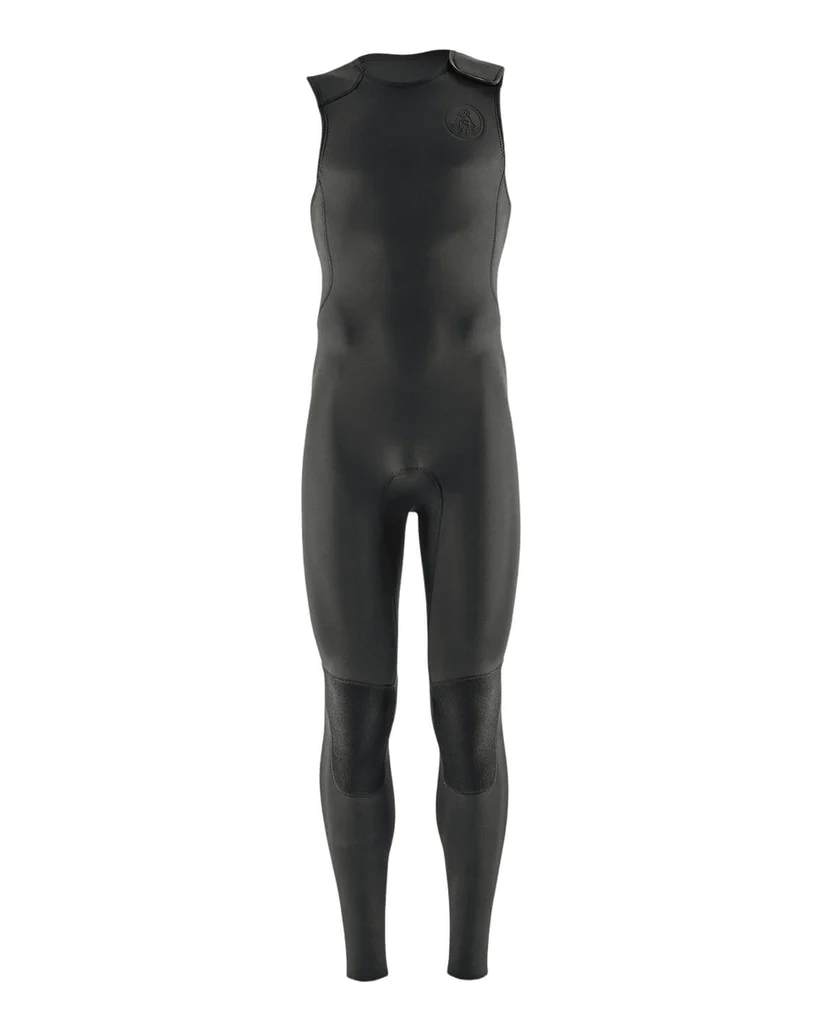
Long John, Long Jane or Short Johns
Water temperatures: 60-65°F / 16-18°C
Sleeveless wetsuits with either full or short leg coverage are often referred to as Long John or Long Jane wetsuits. These are named after fictional characters and are sleeveless with either full-length leg coverage or cropped at the knee.
They're particularly popular among paddleboarders as they provide greater freedom of movement in the arms. However, since they lack a neck/arm seal, they're best for surface watersports or warmer climates, as water can easily flush through the suit.
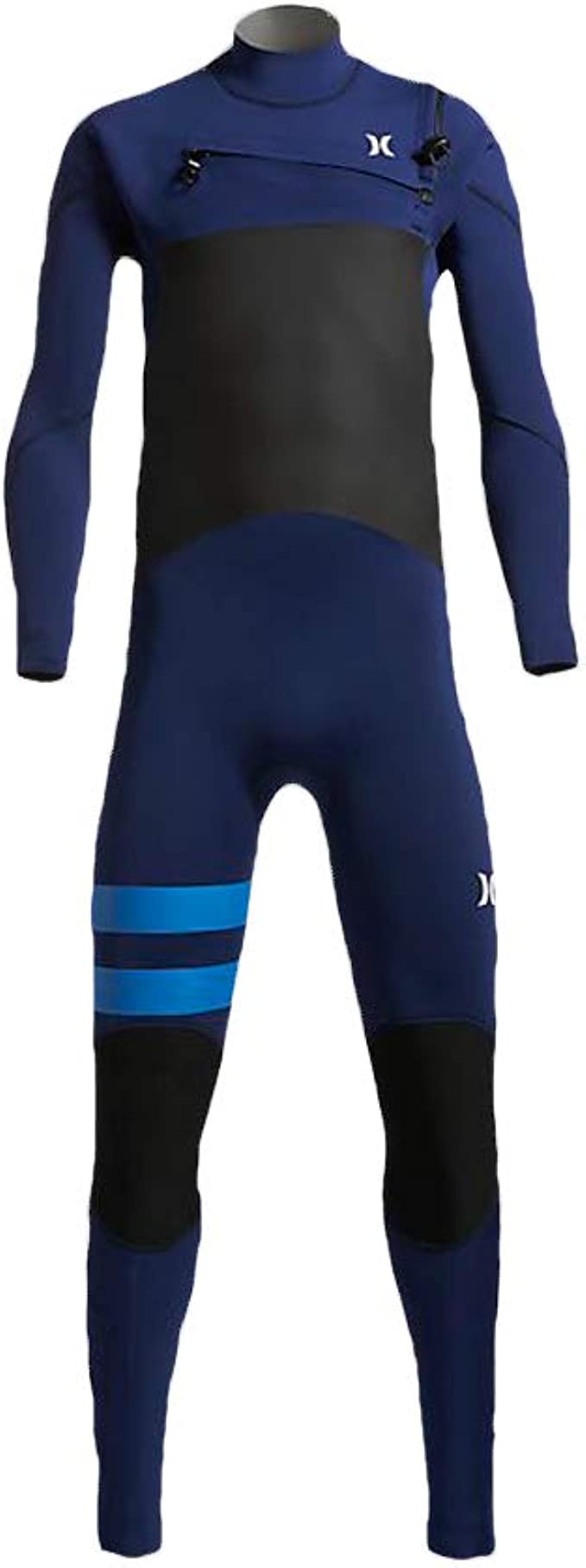
Full Suits, Steamers, and Hooded Wetsuits
Water temperatures: 65°F / 18°C and below
Full suits, also known as steamers, are wetsuits that cover your entire body except for your head, hands, and feet. They're available in a range of thicknesses, typically from 2mm up to 6mm, making them suitable for a wide variety of water temperatures.
Hooded wetsuits are a type of full suit that includes an integrated hood, providing extra protection from the cold and preventing water flush-through when duck diving under waves. These are available in thicker options, usually 6mm or 5mm, and some 4mm suits.
Full suits don't just protect against the cold; they also guard against jellyfish stings and harmful UV rays.
What wetsuit size do I need?
To achieve a wetsuit that fits like a second skin, it is crucial to get the sizing right. A wetsuit that is too loose will allow water to flush through and leave you feeling cold. On the other hand, a wetsuit that is too tight will restrict your range of motion and make it difficult to move freely.
If you are trying on wetsuits in person, test the fit by bending over and touching your toes (just make sure you keep your undies on!). If your movement is restricted, it may be too tight.
Women's wetsuits are typically sized by dress size, but it's important to check the manufacturer's size chart to ensure a proper fit. Each wetsuit brand will include a manufacturer's size chart, as there may be slight differences in sizing between brands.
Men's wetsuits are commonly sized Small, Medium, Large, etc. If you haven't previously owned a wetsuit, it's best to refer to the size chart on the manufacturers’ site to select the right size.
To accommodate different body shapes, wetsuits are also available in Short and Tall cuts. These sizes are marked with a 'T' or 'S' after the size, such as MT for "Medium Tall". This size has the same chest and waist measurement as a standard Medium but offers additional length for those who are taller.
Wetsuit materials & construction
Putting on and taking off a wetsuit is more involved than you might think. There are three different types of wetsuit entry systems: back zips, chest zips, and zipperless.
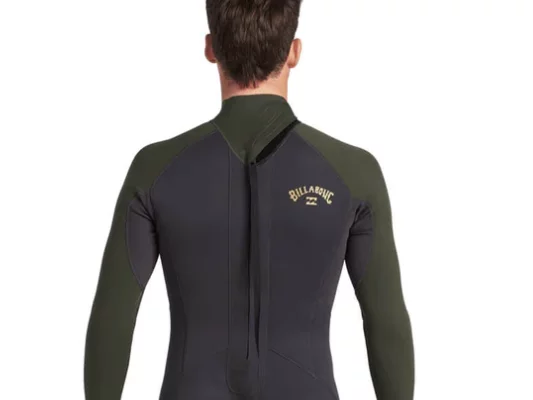
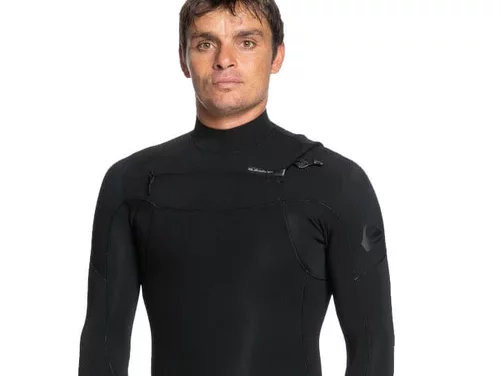
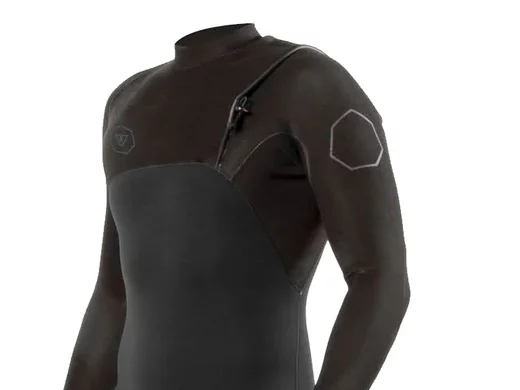
The wetsuit seam construction may help with keeping water out and providing added durability. Note that it is possible to see multiple seam technologies in more premium wetsuits, such as the incorporation of GBS seams, internal taping, and some type of thermal lining.
Wetsuit Accessories: Gloves, Booties, & Hoods
If you are surfing in water 60°F / 16°C or below, you may want to invest in some wetsuit accessories that will help keep the warmth in.
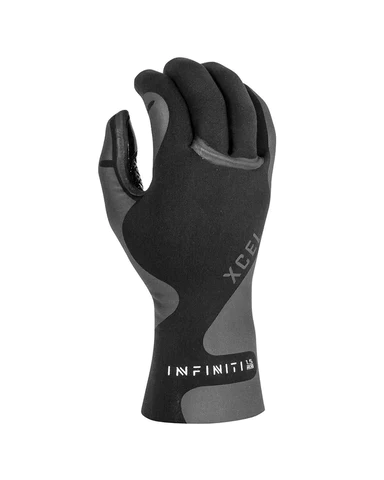
Wetsuit Gloves
Wetsuit gloves are made of neoprene and are worn during cold water activities. Five-finger gloves offer the most dexterity, while mittens are better suited for very cold water. Hybrid models with three fingers, resembling lobster claws, are also available.
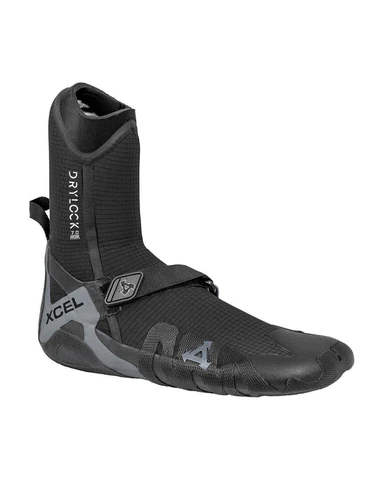
Wetsuit Booties
Wetsuit boots are made of neoprene and rubber and are worn during cold water activities. They can have either a round toe or a split toe design. Boots with an external split toe have a separate big toe for better dexterity, while internal split-toe models combine the dexterity of a split toe with the warmth of a round-toe design.
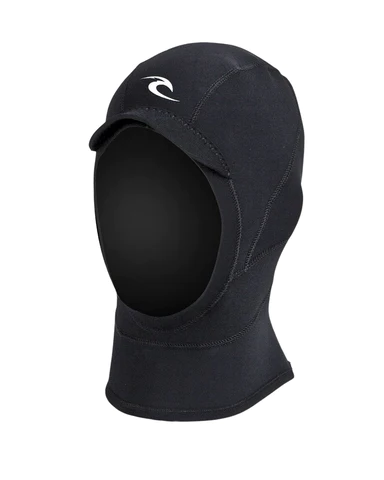
Wetsuit Hoods
Wetsuit hoods can be added to hoodless wetsuits for additional warmth in colder waters. Some wetsuits come with built-in hoods.
Related reading:
